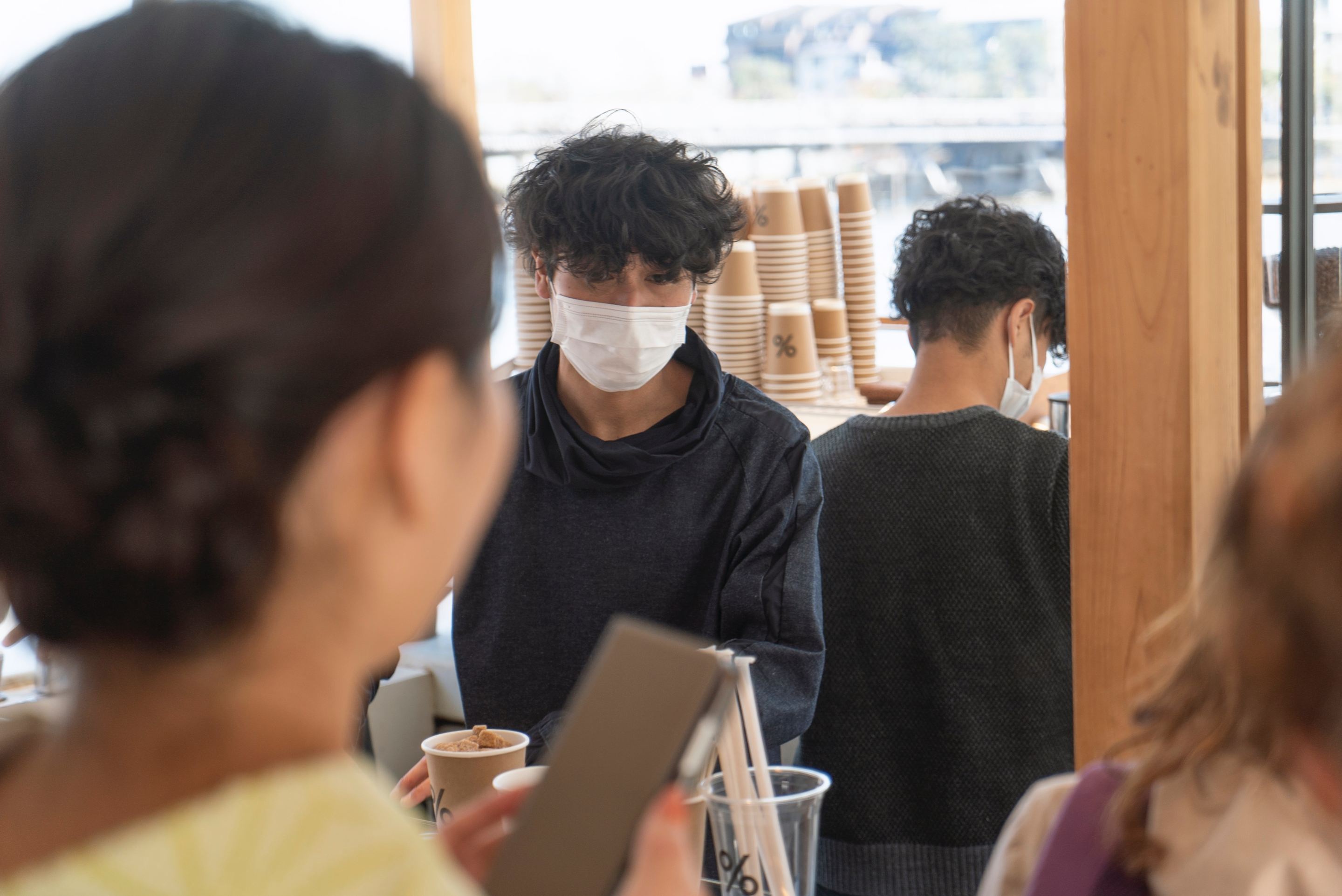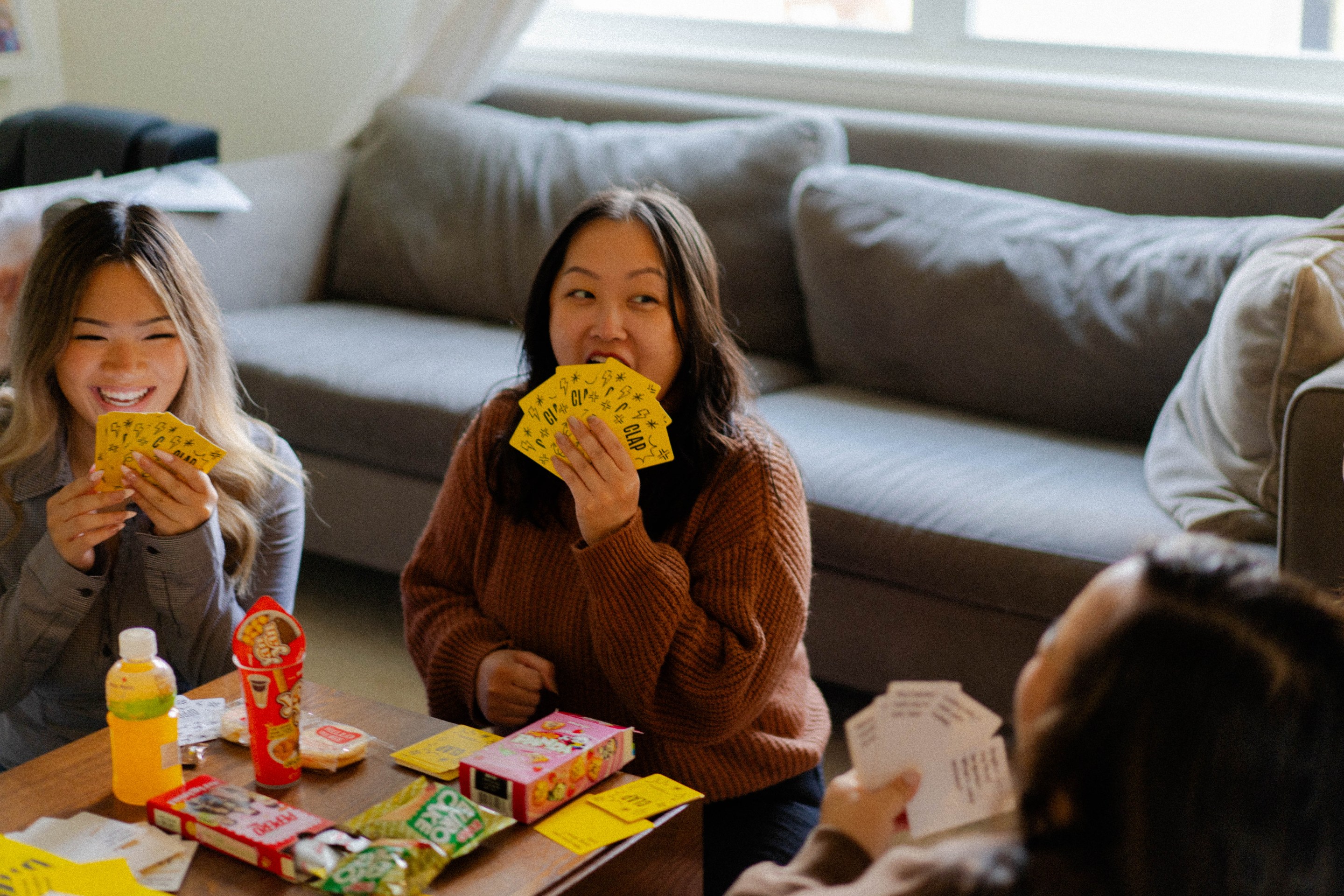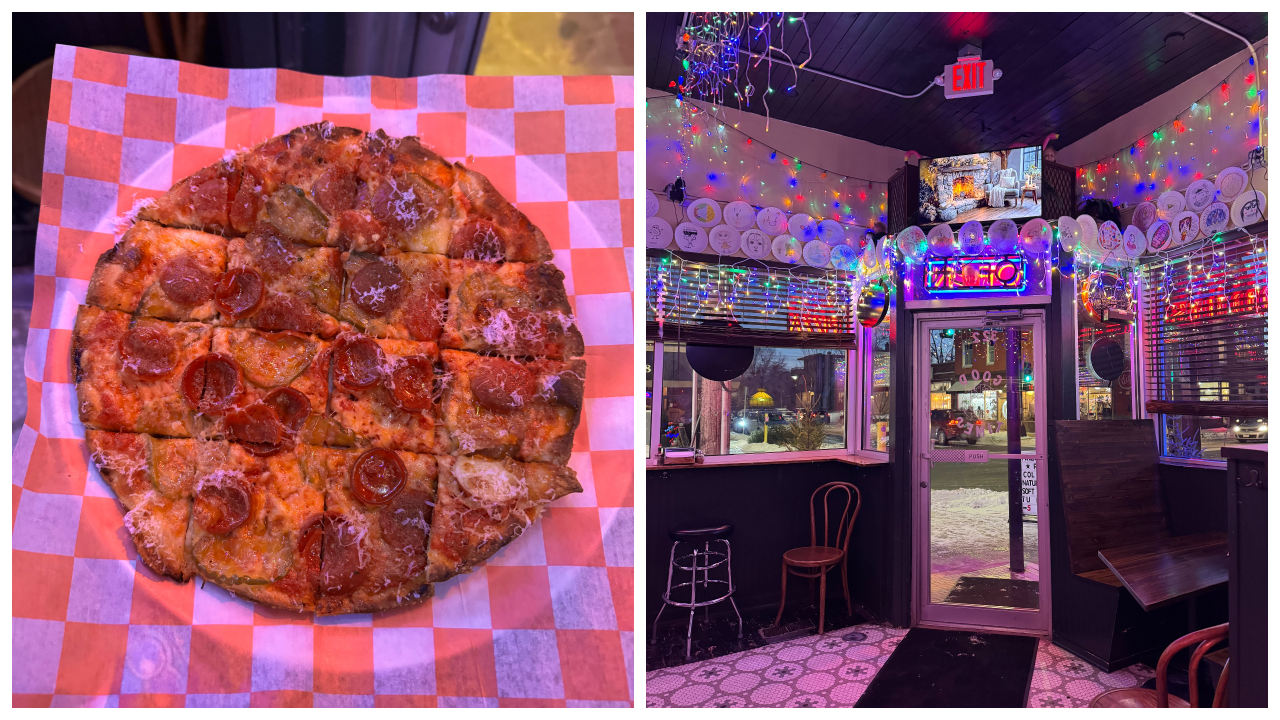A few weeks ago, I sent a message to Kat Naden—owner of Duck Duck Coffee in south Minneapolis—to ask if she’d be willing to chat for this story. Duck Duck was one of the few remaining dining establishments asking guests to wear masks inside, and I wanted her take on the enduring Covid-related challenges facing restaurants, bars, and coffee shops.
We made vague plans to chat, and then, two or three days later, Naden sent me a follow-up message. For the first time since the pandemic hit in March 2020, she’d come down with Covid.
It seems impossibly on the nose, but it’s the reality for people working in the service industry today. You’re not just struggling with inflation and a labor crunch and the population's rewired dining habits, you’re also trying to dodge a virus that’s still infecting thousands of people in Minnesota every week.
Gov. Tim Walz issued the executive order closing bars and restaurants for indoor dining three years ago this month. Two years and two months ago, restaurants were allowed to open at 50% capacity. It’s only been a year and nine months since Walz lifted the final indoor dining restrictions, and mask mandates continued on and off, depending on the city, until just over a year ago.
That’s not exactly an eternity. And while there’s been a real push to put the pandemic behind us, many restaurants and bars are still reeling from its ongoing ripple effects.
Over the last month, we talked to a number of restaurant owners—some who’ve closed restaurants since early 2020, some who haven’t, some who are worried they might—along with restaurant workers and diners. What are their concerns right now? What’s changed, for better and for worse? And what’s maybe never going to be quite like it was again?
In the early days of the pandemic, many experts predicted that it would be “an extinction event” for the restaurant industry. “The post-pandemic dining experience will be unrecognizable,” Matt Goulding wrote in The Atlantic. Various estimates put the number of pandemic-related closures anywhere between 20% and 80%—a comically large window, but one that underscored the uncertainty of the times.
Buoyed by PPP loans and Restaurant Revitalization Fund money, which weren’t a given when the pandemic hit, more restaurants were able to keep the doors open. Roughly 70,000 of them closed due to Covid in 2020; closures were up, but the figure was far below the early estimates. And few people today would tell you that the dining experience in 2023 is “unrecognizable.”
But it is noticeably different, in a number of key ways. One big one? The cost.
“As someone who dines out frequently, I’ve noticed the checks getting dramatically bigger,” says James Norton, owner and editor of the Twin Cities food website Heavy Table. Four years ago, Norton would go out to eat between two and four times a week without giving it a second thought. But four years ago, the $15 sandwich was still something of an aberration in the Twin Cities; it isn’t now.
It’s not just anecdotal. Norton points to a recent National Restaurant Association report on menu prices, which found that they jumped 8.4% nationally between February 2022 and February 2023. In the Midwest, that figure is closer to 9.3%. It’s a rate of growth not seen for nearly four decades, and it’s still behind grocery store prices, which increased 10.2% during that same period.
“It all kind of folds together into a much bigger story that dates back to the pandemic and the way it changed the market, and the service industry, and some of the essential inputs that go into restaurants—most notably, the food,” Norton says. “I think the pandemic kind of ripped the cap off a lot of pressures that were building up already over the years.”
Black Sheep Pizza closed its downtown St. Paul location in May of last year, a decision that was lightly derided (including here on the pages of Racket) because of a poem they posted on the doors of their shuttered restaurant titled "Covid, bike lanes and shortages, oh my!" Of course, the most impactful of those three factors are the ones that are being felt by everyone who works in the industry.
“It’s not like restaurants just reopened and things snapped back to normal,” Black Sheep co-owner Colleen Doran says today. “Things are so different. First of all, prices for things are super high. Like, food is really high. Wages are really high.”
And while she says she’s glad wages have gone up, that’s still a factor, one that’s compounded by the higher cost of everything else.
“It’s a dance, man. It’s a complete dance,” adds Tim Niver, owner of the St. Paul restaurants Mucci’s Italian and Saint Dinette, the latter of which is just around the corner from the now-shuttered Black Sheep. “And I think it’s never been harder. It can work, but I really think people are between a rock and a hard place… passing the real costs on to people would shock the fuck out of them.”
As important, Niver says, is that people just aren’t interested in going out to eat with the gusto they once were.
“The real thing that has happened is that people have changed their habits,” he says. “I just know that people are not dining at the frequency, going out at the same frequency. They’re staying closer to home, and they desire safety. And while they’re interested in the new thing, it’s gotta be kinda convenient.”
It’s all part of an affordability ouroboros: Prices are higher, so people are going out less across income levels, which keeps prices higher, which keeps people going out less. These days, Norton at Heavy Table says that even as a restaurant writer, he’s dialing back his dining out. “The way I’m thinking about dining, as a dad with two kids, is kind of evolving to be more like my parents: more hesitant to go out, didn’t go out as much, kind of viewed it as a luxury,” he says.
It’s possible that cycle will mean more restaurants close over the coming years. But while Niver and Doran closed restaurants since Covid hit, both say that it was a decision they made in part for their own mental health.
“Another really big piece that I don’t think a lot of people are really talking about, is: It was a lifestyle decision for us,” Doran says. “What we experienced during the pandemic was really hard. We looked at our life and we were like, ‘What do we want from a time perspective? We want one less.’ I think that’s what some people are doing right now—just reevaluating, ‘How do I want to live in this world?’”
“I’ve tried to split my life up into some manageable buckets of what’s meaningful to me, and what’s possible for me, and what’s potential for me,” Niver says. That means doing more with Mucci's frozen food brand; it means spending more energy on his podcast, Niver Niver Land. “My personal journey through this has allowed me to be happier with less. And the idea that there’s more out there, if I choose to pursue it.”
Some industries have been able to hire back workers after recovering from their pandemic woes. The restaurant industry isn’t one of them—just last month, the Washington Post reported that nearly two million jobs are unfilled, and the leisure and hospitality industry is roughly 500,000 employees short of pre-pandemic levels.
One of the reasons there’s been such a shortage of skilled labor in the restaurant biz since Covid hit is that plenty of its most talented workers, people who previously thought they’d be lifers, left for other industries. In late 2020, we talked to six of them—folks who were finally fed up with the long hours, the low pay, the rude customers, and being on the front lines of a pandemic and getting no verbal or financial recognition for it.
“I think during the pandemic, people in the industry were very much treated as disposable,” Norton says. “They were dying in numbers that were alarmingly high, compared to other lines of work. And they were doing it for fairly low wages, and often little to no benefits. I think a lot of people had a real come to Jesus moment, where they were like, ‘Why am I doing this to myself? Why am I here?’”
Others, like Josh Coleman (we’ve changed his name at his request to protect his employment) have stuck it out, though he understands why so many moved on to other things. “During the pandemic, there was kind of this whole reexamination of, ‘What is our labor worth?’” he says. “They’re still trying to get $15 an hour passed federally, but $15 an hour doesn’t cut it.” He adds that hosts and food runners and cooks deal with a lot of the same stressors that servers do, for far lower pay, when they could make as much or more in a less stressful field.
Coleman has noticed changes as a restaurant-goer, too—like the fact that fewer restaurants are open early, or late, or really at all beyond the dinner rush. “As far as places serving food late—I know that’s a big thing for me and my coworkers,” he says. “Because we always work p.m. shifts, and when we get out, there’s like, very limited options.” In his south Minneapolis neck of the woods, they’re basically limited to Little T’s and Nightingale.
Sure, Minneapolis and (especially) St. Paul have never been robust late-night towns. But they were happy hour towns. That culture was once so strong in the Twin Cities that City Pages recognized two happy hours in its Best of the Twin Cities issue each year: an after-work winner and a late-night winner.
These days, if you want to duck out of work at 4 p.m. for a cheap drink, or finish your evening out at 1 a.m. with a nightcap and discounted apps, your options are few.
“I think there’s less of a sense that as a diner, you’re gonna get a bargain when you dine out,” Norton says. “There’s less interest and ability to play to that marketing channel. And I think maybe happy hour just isn’t gonna be a thing for a while, until restaurants can find their footing and be competitive on pricing again.”
Coleman guesses that the cause is both not enough staff and not enough customers. His current workplace in Minneapolis is pretty busy, but dining habits just aren’t what they once were. “I think they’re the largest they’ve ever been since the pandemic, but I don’t think we’re back up to those pre-pandemic levels,” he observes.
Then there’s the issue that’s probably at the center of the Venn diagram of “things restaurant workers notice and care about” and “things restaurant customers notice and care about”: service fees. Occasionally appearing on menus in the days before the pandemic, these surcharges—typically a percentage anywhere between 3-20%, assessed on the total of the bill—became ubiquitous over the last few years, as restaurant owners looked for a way to square rising costs with thinner margins.
Done well, these fees can be a win for all parties; Doran says Black Sheep’s new 4% charge lets them pay 90% of employee healthcare, including vision and dental. Beginning next month, that fee will let them start offering a 401K, something they’ve never been able to do.
But many diners don’t like them because it’s unclear whether they’re supposed to tip on top of the charge. (Even if the fee is 25%, the language on each receipt notes that it’s not a tip—restaurants have to do that because Minnesota law forbids tip pooling.) And servers? Well… the reviews are mixed.
“It’s… I don’t want to go as far as to say ‘wage theft,’ but you could see it that way,” Coleman says. Of course he wants liveable wages for the back-of-house staff; of course he thinks people in those non-tipped roles deserve to make a living like the servers do. “I believe that should be falling on the business itself,” he explains, “not taking money from one employee and giving it to everybody else, in lieu of the company actually paying a higher hourly rate on their end.”
Coleman says he has seen some changes for the better—for example, a diminished culture of “atrocious” head chefs with big egos. “I feel like it’s kind of a changing of the guard, so to speak, where a lot of the new chefs that are coming in don’t have those narcissistic attitudes.”
That’s one of the potential areas of positive growth in the industry: more union chatter, an emphasis on workers’ rights, a greater understanding that serving isn’t just something people do part-time when they feel like it.
“What I feel like a lot of people don't understand is: Serving is a career,” he adds. “It’s not just like, we’re doing it in between years in college or something like that. It’s a bonafide career.”
In the summer of 2020, when the pandemic had been raging in Minnesota for a few months, Nixta Tortilleria opened in northeast Minneapolis. The idea was born from the pandemic, and the members of “Team Tortilla” were among the folks I spoke to for a story that October that asked: “Why would anyone open a restaurant right now?”
The short answer, according to chef Gustavo Romero & Co.? They saw a need for affordable, accessible, delicious meals that people could enjoy at home.
“We had to really rethink the idea of what it means to feed people,” the members of Team Tortilla reflect today, answering jointly by email. “If they can't sit and eat, what does a worthy meal look like? How can we make it easier for people to enjoy restaurant flavors and quality meals when they are not at our restaurant?”
And even restaurants as small and clever as Nixta are struggling in the current climate: “The whole world is short on hands, and the cost of rising food prices is affecting everyone who eats or makes food for a living,” the Nixta team continues, adding that the rising cost of corn and transportation might mean there will be “difficult pricing conversations ahead.”
The only constant is change, right? A week or so after Kat Naden at Duck Duck messaged to tell me she had Covid, we were able to get on the phone. (She’s feeling much better: “It was like, four days of sleeping, and then I was fine.”)
Until last week, Duck Duck’s social media accounts read, “masks still required,” but this past weekend, after speaking with her staff, Naden updated that to “masks real recommended.” The addendum remains: “I know, we suck. It’s a bummer.”
Naden’s been in a tricky position—her son works at the coffee shop and still, knock on wood, hasn't gotten Covid. One of their employees was pregnant, and she didn’t want to risk her or her baby to get sick, part of what led the shop to keep mask requirements in place for so long.
“It’s been weird, having people come in the whole time like, ‘Why are you still doing this?’” she says. “It’s just like, because I fucking care about these people!”
Concerns about staff safety haven’t gone away, but she notes that the self-imposed mask mandate “puts us in a weird position.” People don’t expect it, and she doesn’t want the workers to have to chastise customers. She feels some guilt about the waste from people who don a mask and then toss it after the two minutes they spend picking up coffee. So while the staff will continue to wear masks behind the counter, and leave the dividers up, and continue to add cream and sugar behind the counter to minimize touch, and sanitize the styluses that guests use on their tablet, this is one shift Naden finally felt ready to make.
"Anybody who needs to be able to adapt as much as service industry people do, it’s just kind of like—you figure it out, and you move forward,” she notes.
And of course, it’s never all one thing. To quote a headline from a recent Minnesota Daily story that gave me a good chuckle: “Pandemic still hurts some restaurants, others thrive.” Those that were able to adapt and shift, those that were particularly lean and nimble, and especially those that were born from the pandemic, have fared better than those that weren’t.
Nixta, for example, has announced plans to open a sit-down restaurant—Oro—next to the tortilleria's current Northeast location in the coming weeks, though as a small, family business, their growth will be in phases.
“We plan to extend hours, add liquor and possibly a patio, but none of it will likely be in place the first week we welcome customers,” the members of Team Tortilla explain. “Slow and steady, in this environment especially.”
They’re committed to offering a safe sit down dining experience that will be around for a long time, and that means being as smart and agile as they’ve been since that early pandemic opening.
“We feel that is the best way to truly celebrate corn and masa in the fashion that we want to,” Team Tortilla says. “It may seem strange or risky, but we know there is untapped opportunity to build more followers and convert more folks to better tortillas if we offer meals at our house, instead of theirs. We're also lucky to have an amazing landlord, who is as committed to us as we are to the neighborhood, so it's the perfect opportunity to do something crazy. Again.”







